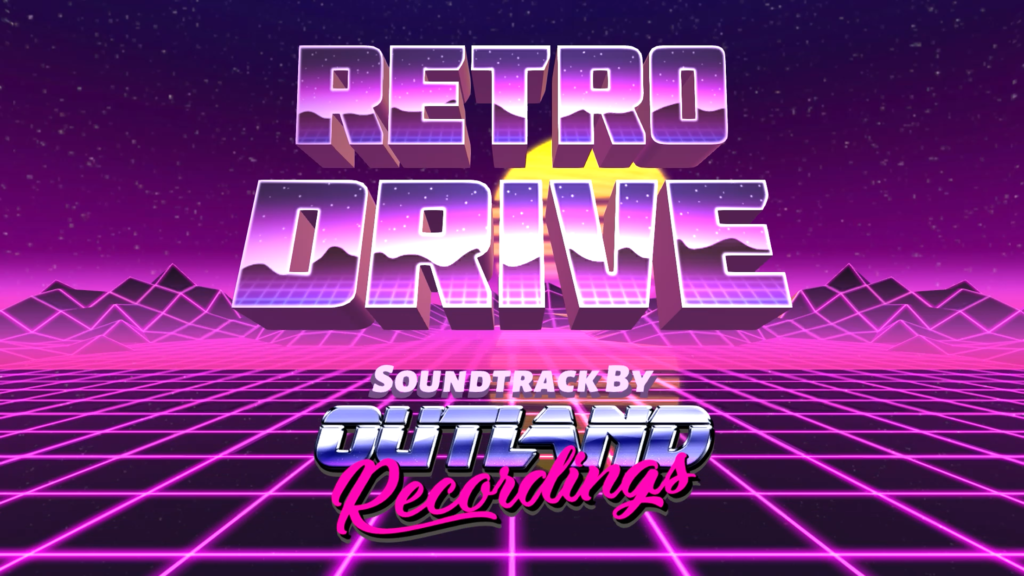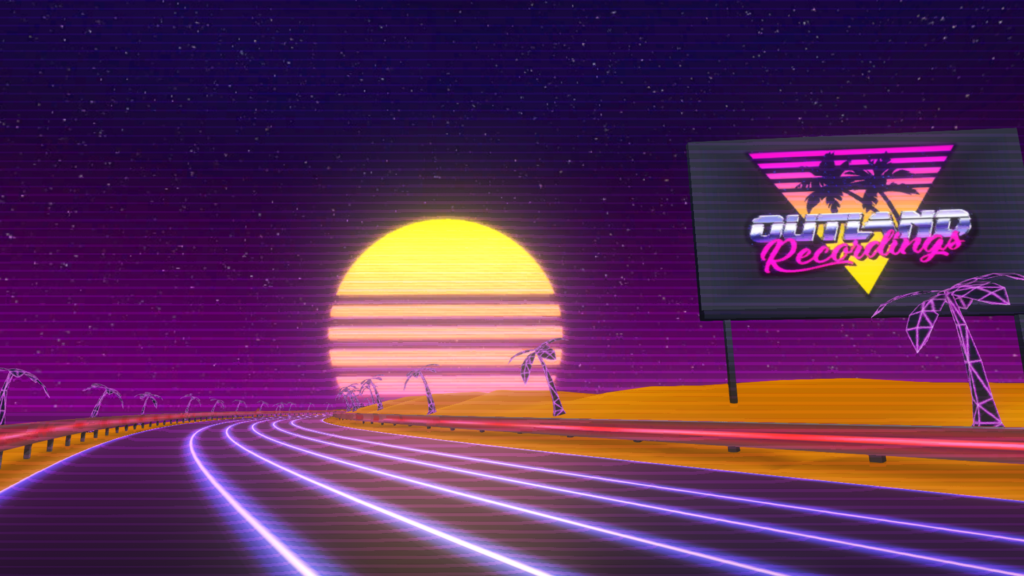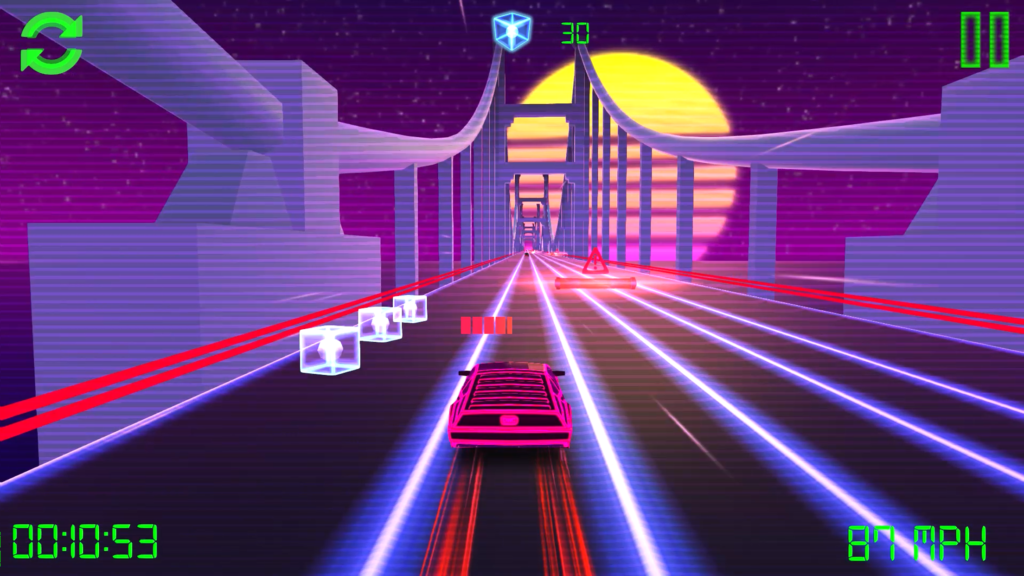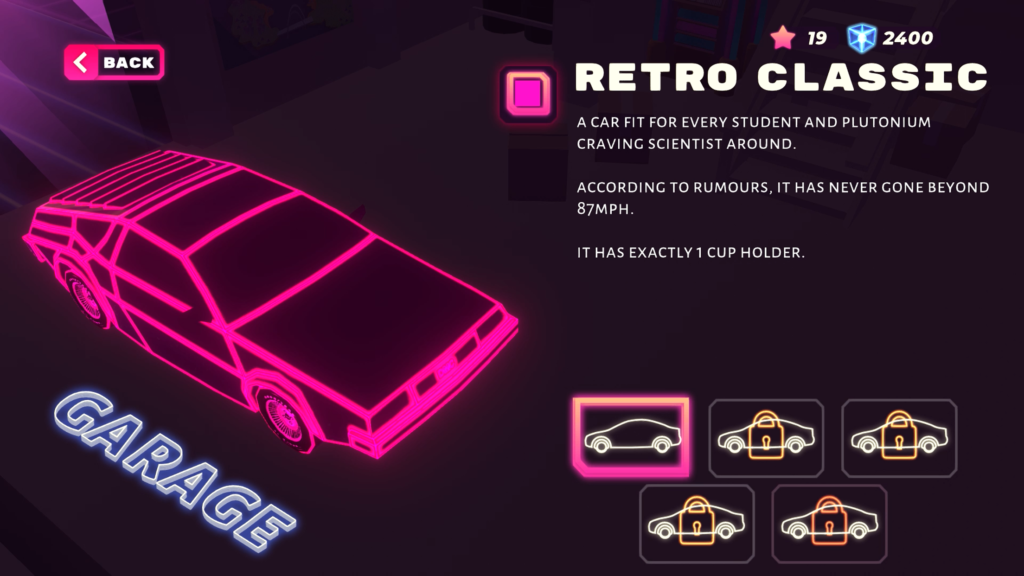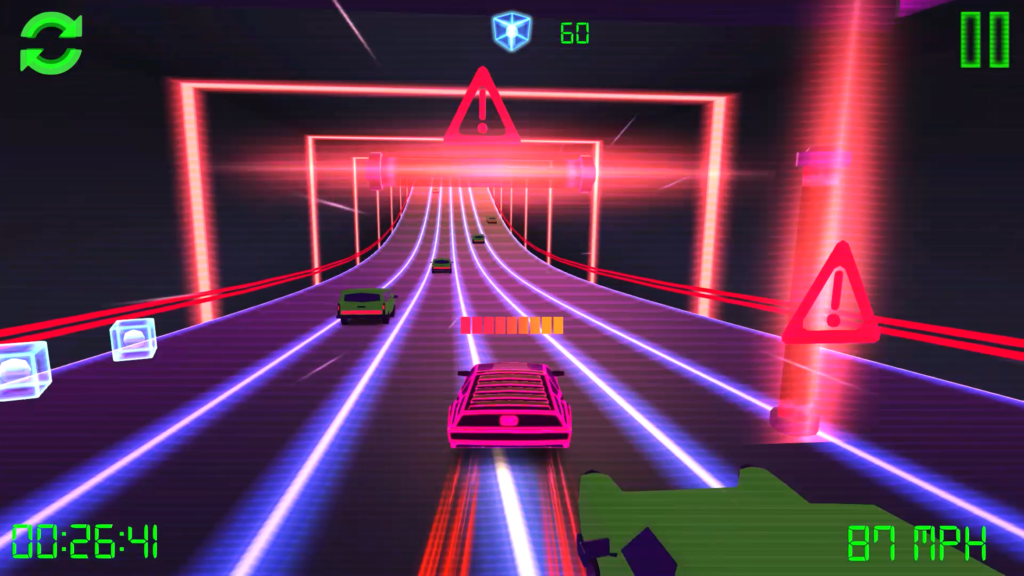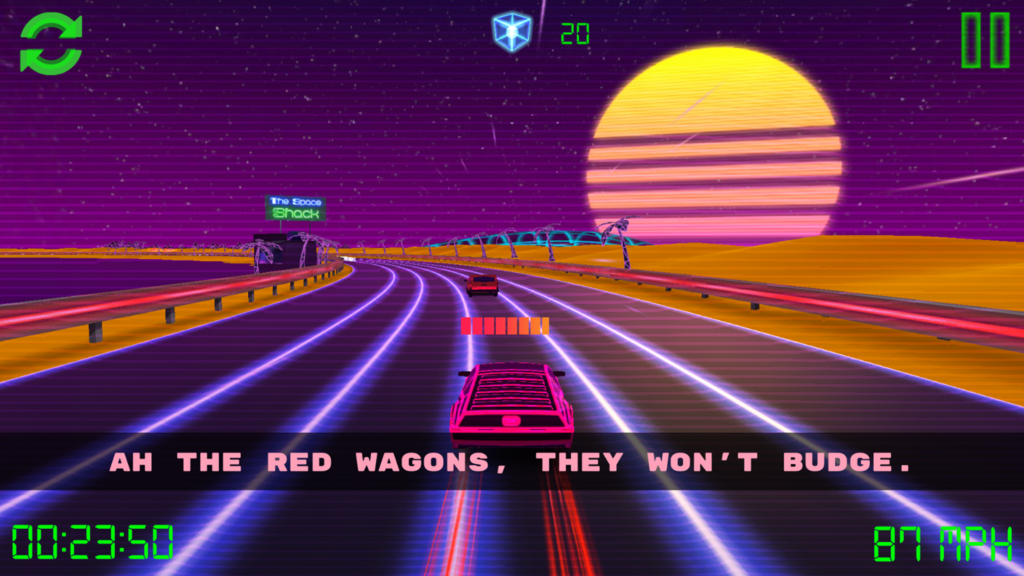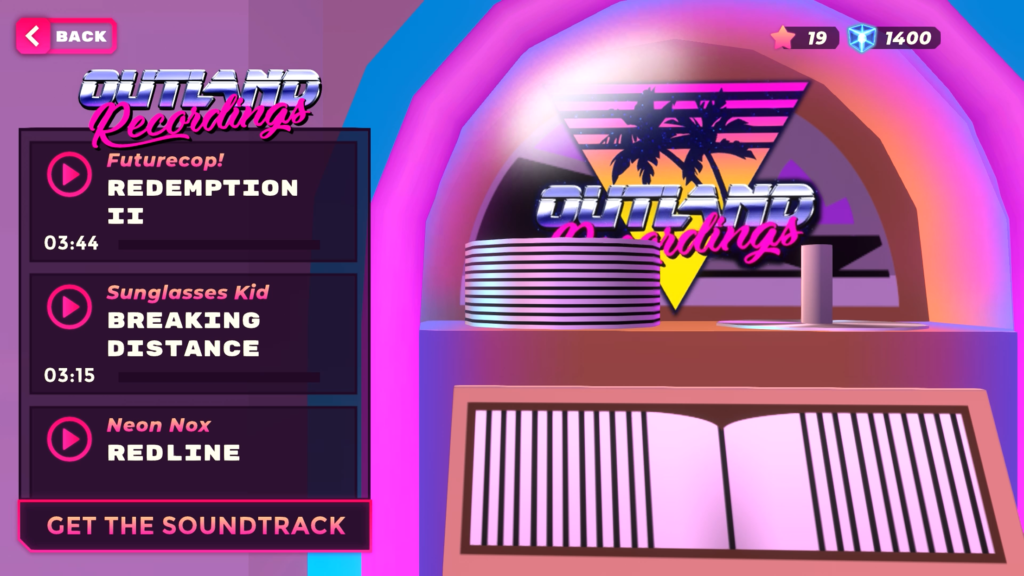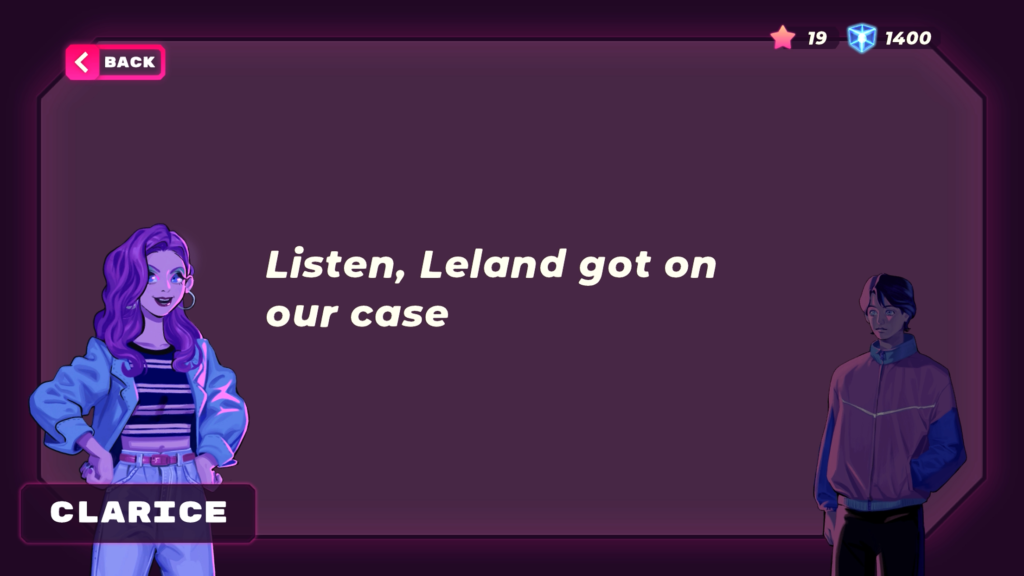Released May 1st 2020 on IOS.
Follow the journey of a college kid, through Retropolis. Held back after class, he now has to catch up with his friends who are already out party’n! Play for free!
Driven by determination and an inspired Synthwave soundtrack, turn the volume up, put the pedal to the metal, and race to catch up with your pals! Retro Drive is a driving game with a cool retro 80s vibe. The style and feel of the game derives from the Retro Wave aesthetic, referencing iconic elements such as neon glows, muscle cars, speedsters and of course 80s references. The gameplay involves driving through Retropolis, overcoming various challenges, all to an unforgettable Synthwave soundtrack. Developed by a small team of indie devs after 2 years of evenings and weekends, among with creative individuals that had a strong passion to make games. The devs being a massive synth/retro wave fans themselves, decided they wanted this to be a homage to the Synthwave/ Retrowave genre.
Content:
- 10 complete levels, with pure to the heart synth
- Designed specifically just for Retro Drive
- 5 customisable rides
- Unique 80s inspired story
- Jukebox to listen to the awesome synth music! Soundtrack
Retro Drive is a neon-soaked arcade racer with a killer synthwave soundtrack
Bald, Cameron. Pocketgamer, May 2020
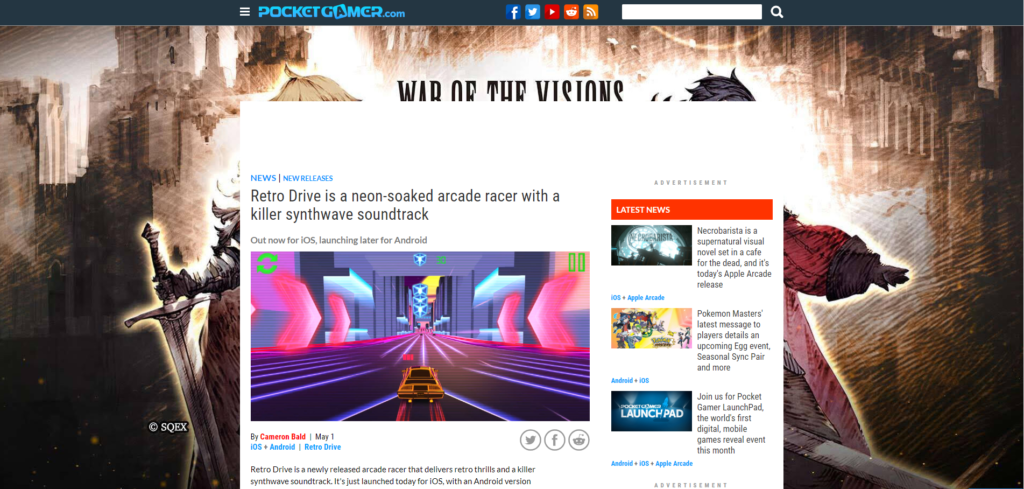
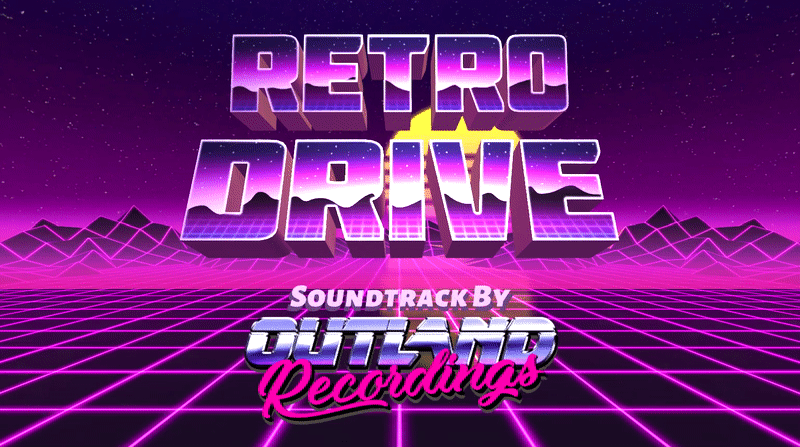
The project started from two developers, Myself and Marco. I took ownership over all the creative tasks, such as 3D, 2D and UI. Marco took control over the coding tasks and anything back-end related. We split the game design tasks between us. The original vision was to create a game that could be released to prove our capabilities. We set out our journey with 3 rules:
- Release “something”.
- Don’t burn out.
- Be proud of what we make.
We analysed why a lot of projects failed and burning out was one of the biggest elements. Among those. We also recognised that scope was a huge factor that contributed the failed projects, a lot of teams over scope and end up falling short, eventually giving up. If these two factors were met but the project was to go ahead the end result often tends to be something that isn’t quite ready to be called a game and tends to not do well. Whenever making a decision we came back to these points and would analyse the risk depending in the order of these rules. It was important the order of the rules didn’t vary too much. Although rule 3 came up a lot of the time and we had many moments of “wouldn’t it be cool if…”. These moments however cool they seemed, had to make sure that they didn’t break the first two rules.
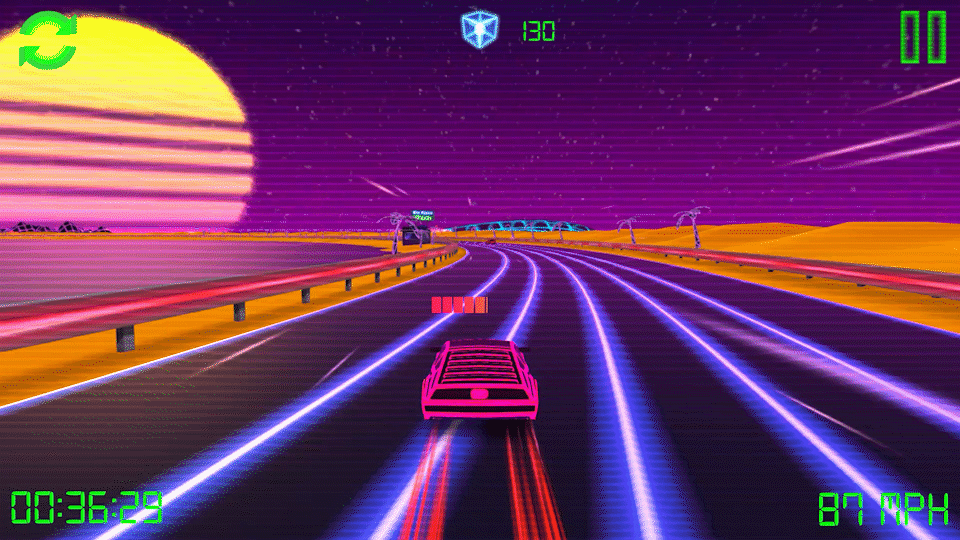
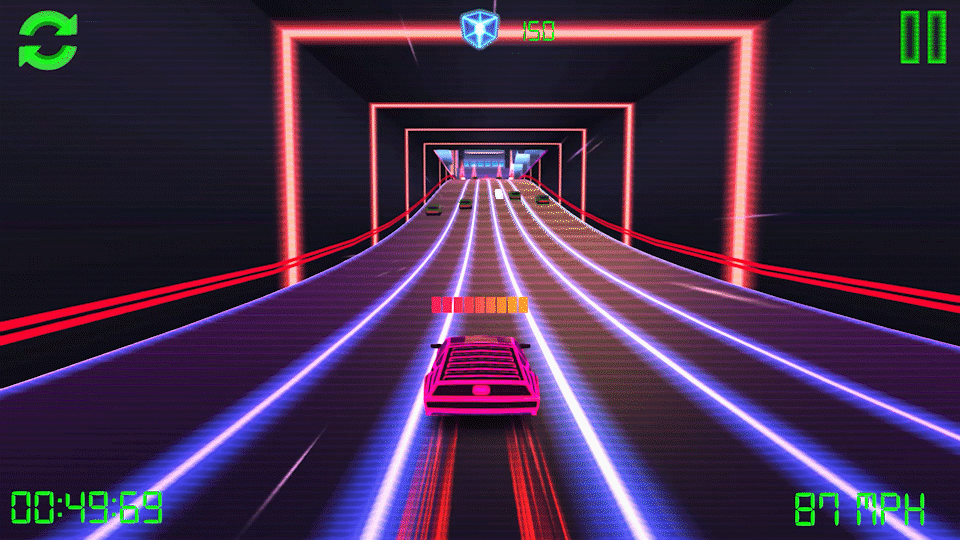
Inspirations
The neon 80s synth theme is hardly a new invention. Also can be referred to: Synthwave, Vaporwave, Retrowave, Cyberpunk, Neon, 80s, Retro etc. It’s something that has been used in games for a long time throughout various projects all with their own flair. Other games have taken their own approach to this and so we did a fair amount of research before starting our project.
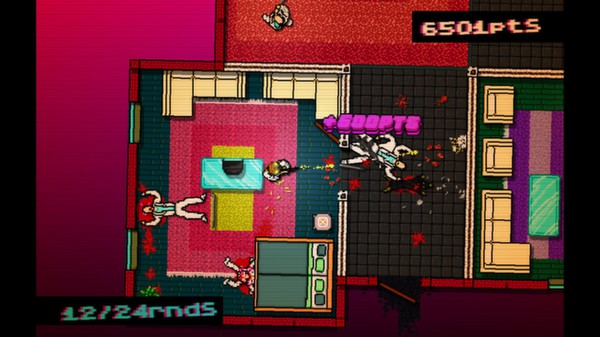
The most “successful” indie Retro 80s hit has got to be Hotline Miami (PC Game). It ticked all the boxes: great game play, awesome story, beautiful retro visuals, and all to a kick-ass synth soundtrack.
Image taken from steam
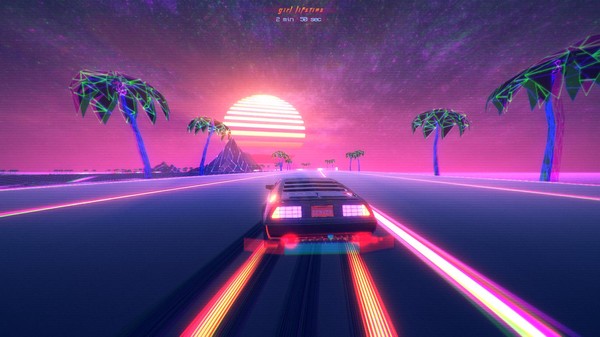

Powerdrive 2000 (PC Game) is another beautiful looking game with some serious potential. If only the project carried on…
Image taken from steam
In comparison Outdrive and Powerdrive 2000 were massive sources of inspiration for the game. Although Outdrive released and is making money I believe the game itself needed a bit more story and progression throughout the level, great-fun mechanics however! Powerdrive 2000 was another game that had more of a realistic/cyberpunk look, and you can tell that they went-to-town on the visuals. However after a couple of years of development and a kickstarter campaign the projected ended up being dropped. An unfortunate end, as it was a game I was quite hyped for.
Our idea
Retro Drive is different because it was designed less about the mechanics and more towards progression and game progression. We introduced level progression, through a narrative direction. A simple yet appealing 80s inspired story was thus crafted and helped to drive us through an idea of progression. “It started with a map”, (much like middle earth) this helped us to decide where the character is and how they will traverse around. We also added other elements such as customisation and unlockable cars, to give the player some other things to do outside the main story and quest.
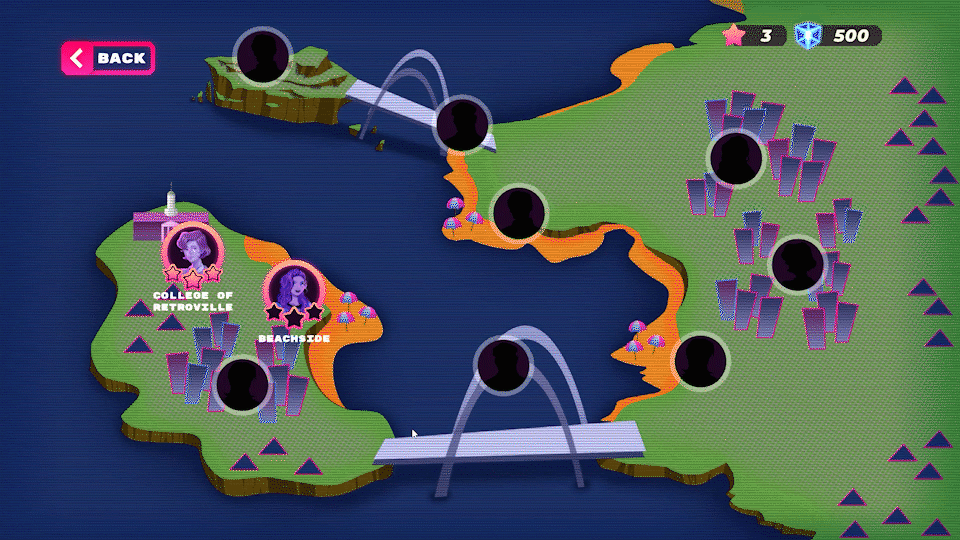
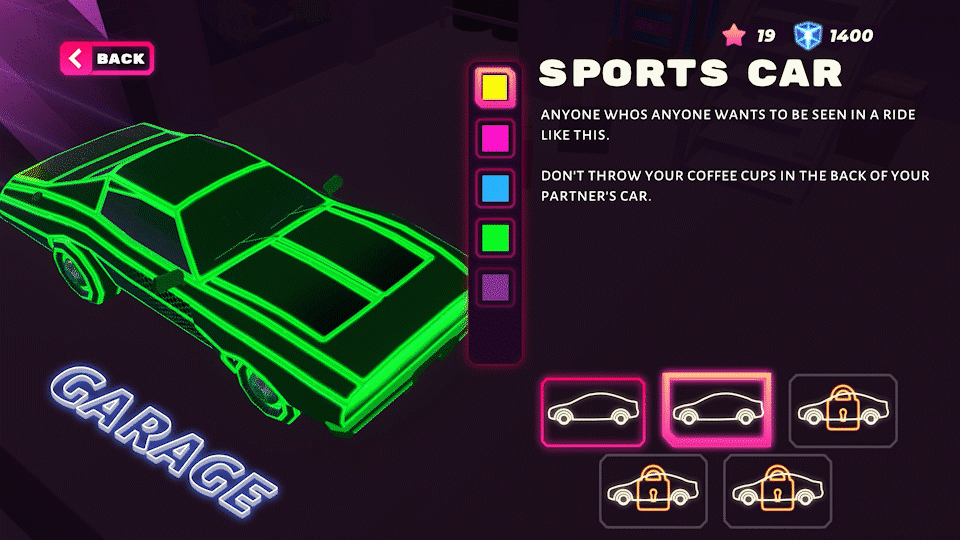
With a true synthwave soundtrack backed by Outland Recordings we had an incredible soundtrack to go alongside the game. They have some of the best synthwave artists under their belt and we were extremely thrilled with the tracks that they made for us. Our relationship started from meeting at their live events, eventually within conversation we decided to collaborate together.
Working with Joe, Marco and the Retro Drive Studio team, has been an absolute delight.
Simpson, Brett. Outland, July 2020.
Their can-do positive attitude and technical know-how, has made it a seamless and productive collaboration.
Trusting them with our brand, the music and the artists we represent, proved well-founded. They met all deadlines and over-delivered on many elements within the game.
We have been impressed with their ability to visualise and develop Retro Drive. Also their professional and mature approach along the developmental process, to the point where its being enjoyed by the public and is now receiving rave reviews. Clearly, they have a firm grasp on their craft and are tapped into the pulse of the gaming fraternity.
It really has been an amazing journey from the initial idea, collaboration, development, through to the final released product. We are very proud of Retro Drive and what has been accomplished. Looking forward to the next project!
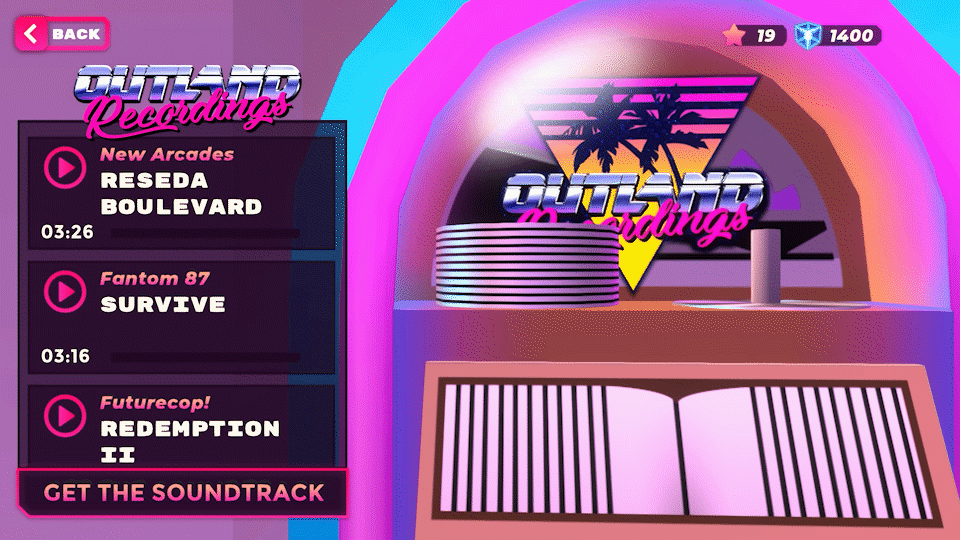
Team
In any team based project you have to spend some time doing management and planning to make sure that the work can get done in time. When people would join Retro Drive, one of the first things we needed to know was their commitment and availability. Understanding these two things was very important as it helped up to scope the game. Scope was important to us as we had an “end goal” in mind and also didn’t want to overshoot for features that would take too long. Nethertheless our team honour a mention as they were extremely integral to the success of Retro Drive:
- Marco – has had over 10 years programming experience/managing teams. He was also working freelance which gave him time to spend on the project.
- Joe – as a 3D artist for around 5 years he had also had many more years in art and design. On top of that, he has been apart of many different indie projects including multiple game jams and Dare to be Digital 2015.
- Scott – Programmer (joined September 2018 – left March 2019)
- Samus – UI artist and programming (joined April 2019)
- Cadan – Narrative designer (joined end of January 2019)
- Yeseul – Concept artist (joined end of January 2019)
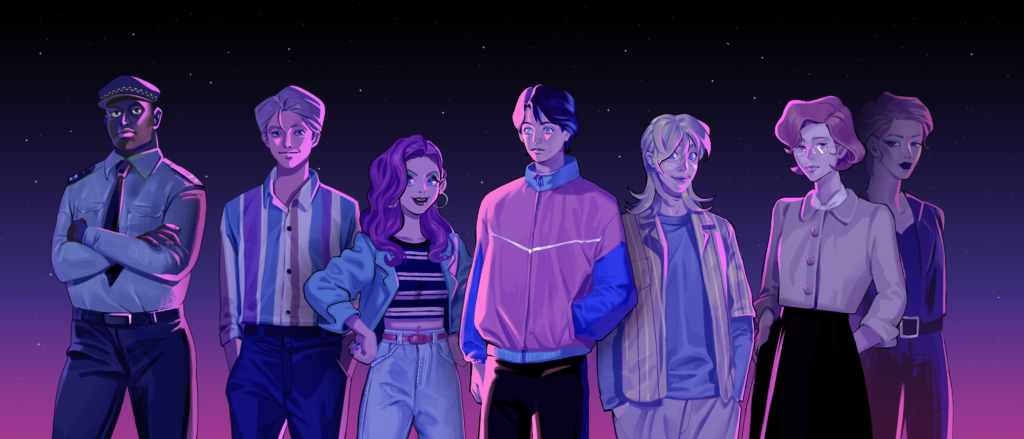
Workflows/WIPs
For the modelling process we used maya to create the props, environments, and cars that you see in Retro Drive. The process to create a car had to follow a specific process, but spent more time and emphasis around the texturing side. We wanted to give this Grid-line effect, so using the UV map as a guide we were able to create this neon grid pattern over the cars.
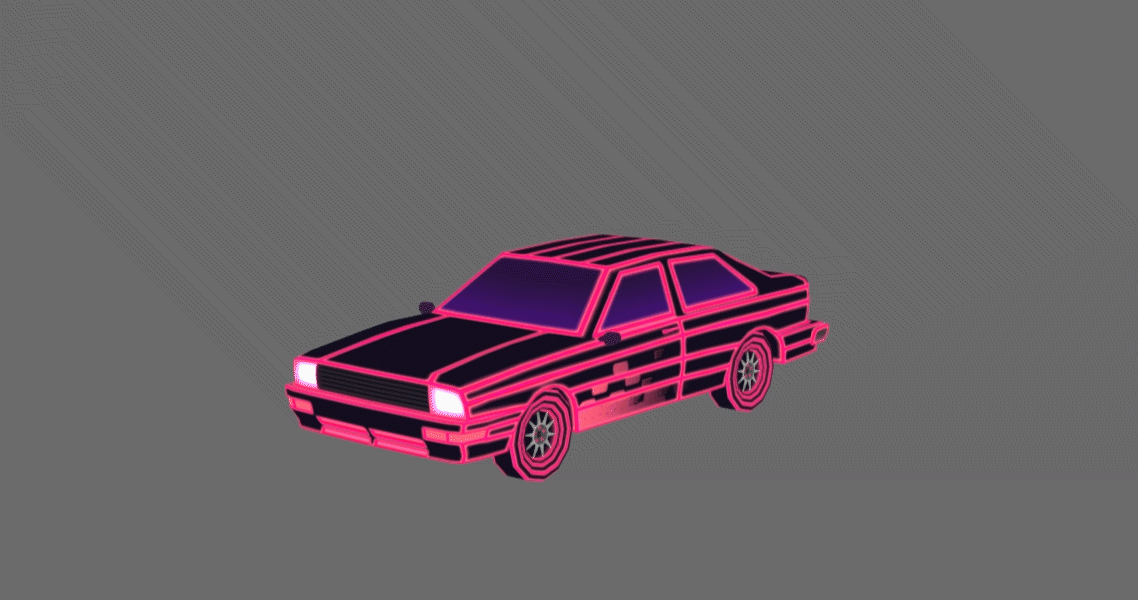
Obstacles were made using various animation methods. This one was using separate obstacle prefabs that you could move and place anywhere around the map. Due to the way animations work, you can’t move the object with the animation on, so the animation had to be attached to the parent object.
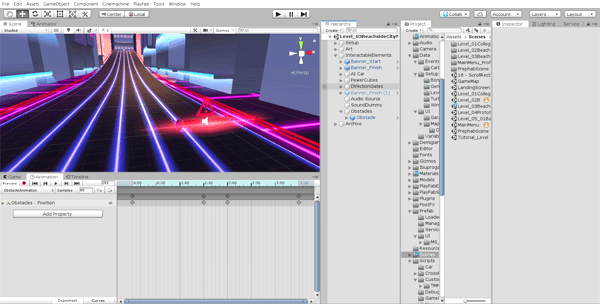
The AI cars were brought to life with a commonly used method, using individual points and pathing. We chose this method because its the cheapest (lower CPU cost) and most flexible option that allowed us to control where the cars can go throughout the levels.
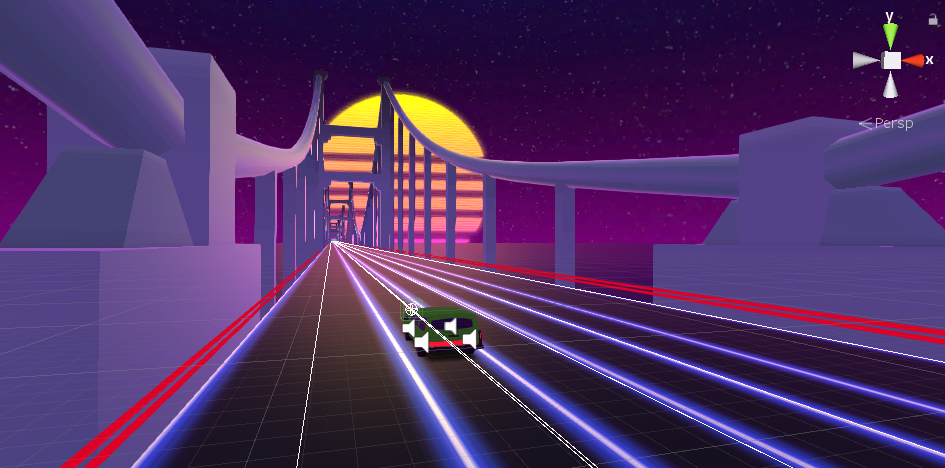
Level progression was also another important aspect to Retro Drive. Although our main intention was to keep the game fairly simple and easy to play, will still wanted to incorporate some levels that are difficult. The levels are mostly quite easy as the tracks are forgiving with plenty of space for the player to move around. We increased difficulty by adding more obstacles or more AI cars.
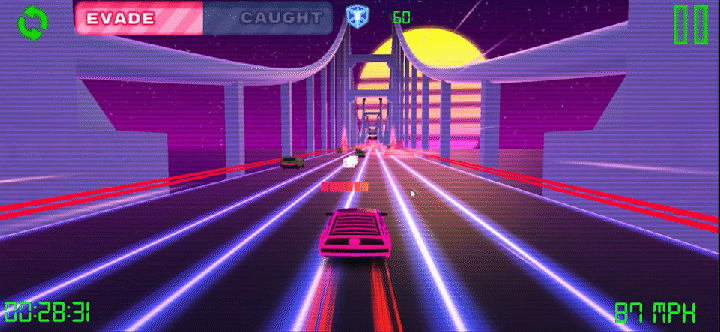
Trailer, etc.
Here is some of the useful links, promo trailer, and access to the game. Thanks for reading!
